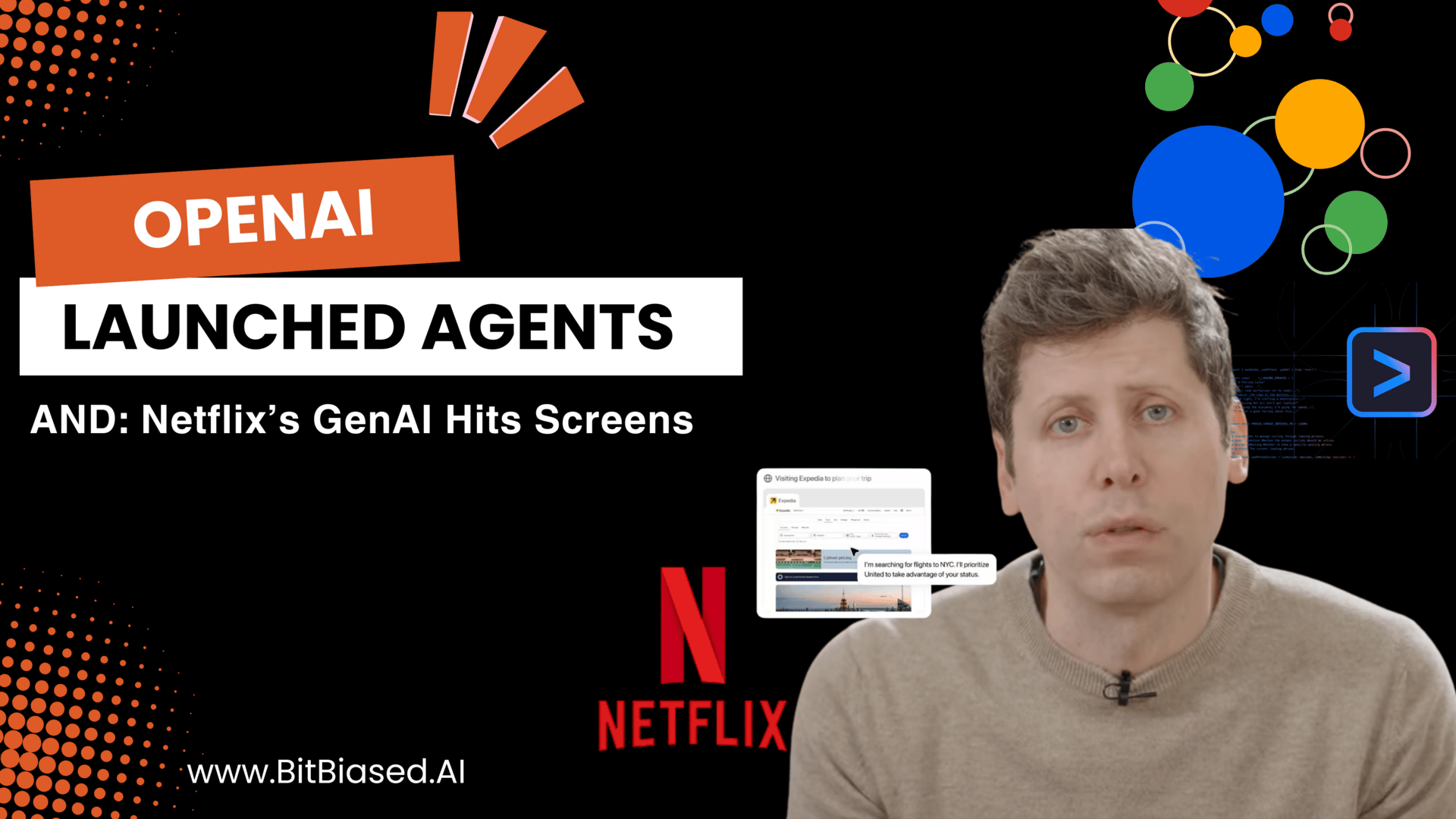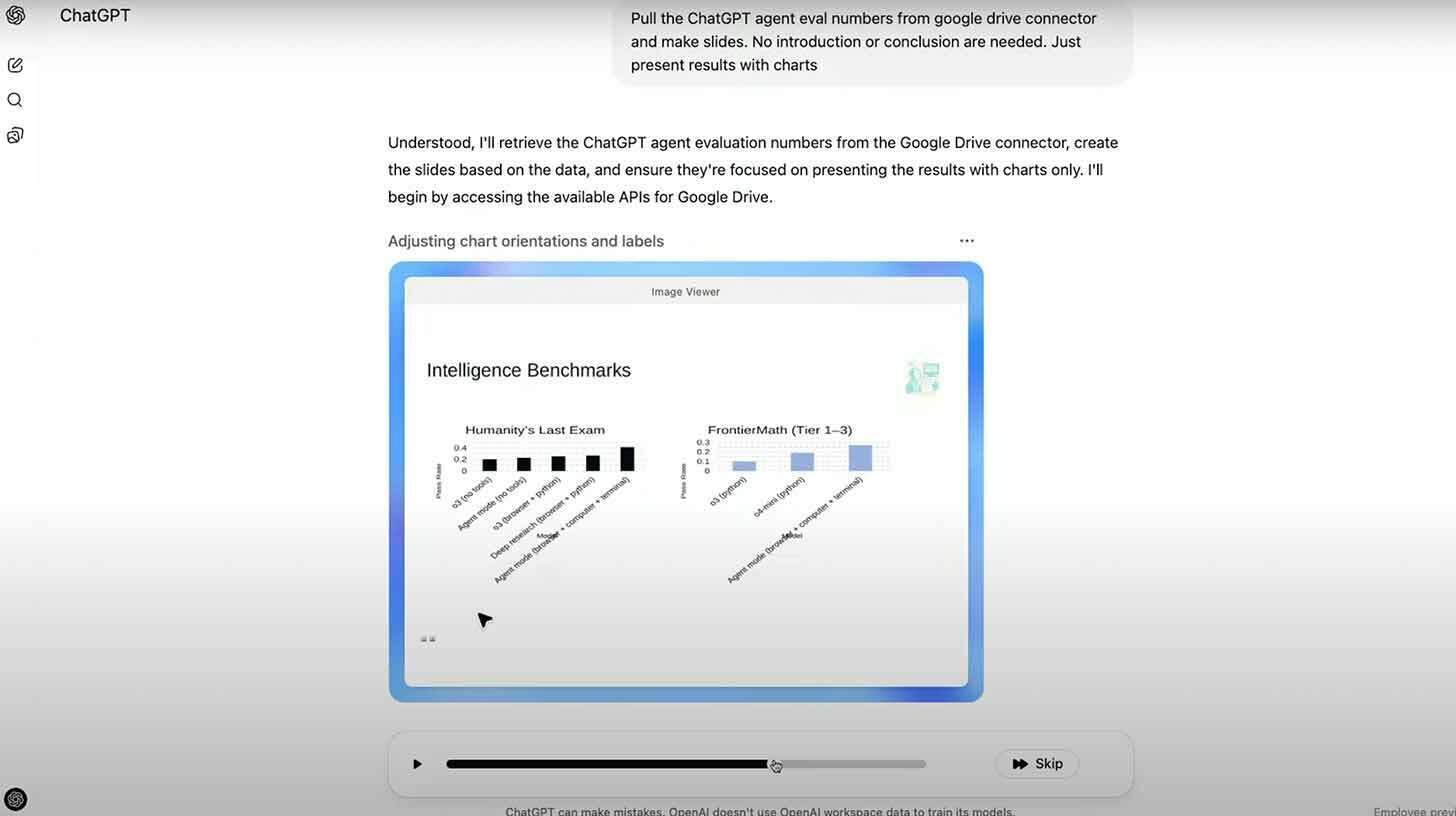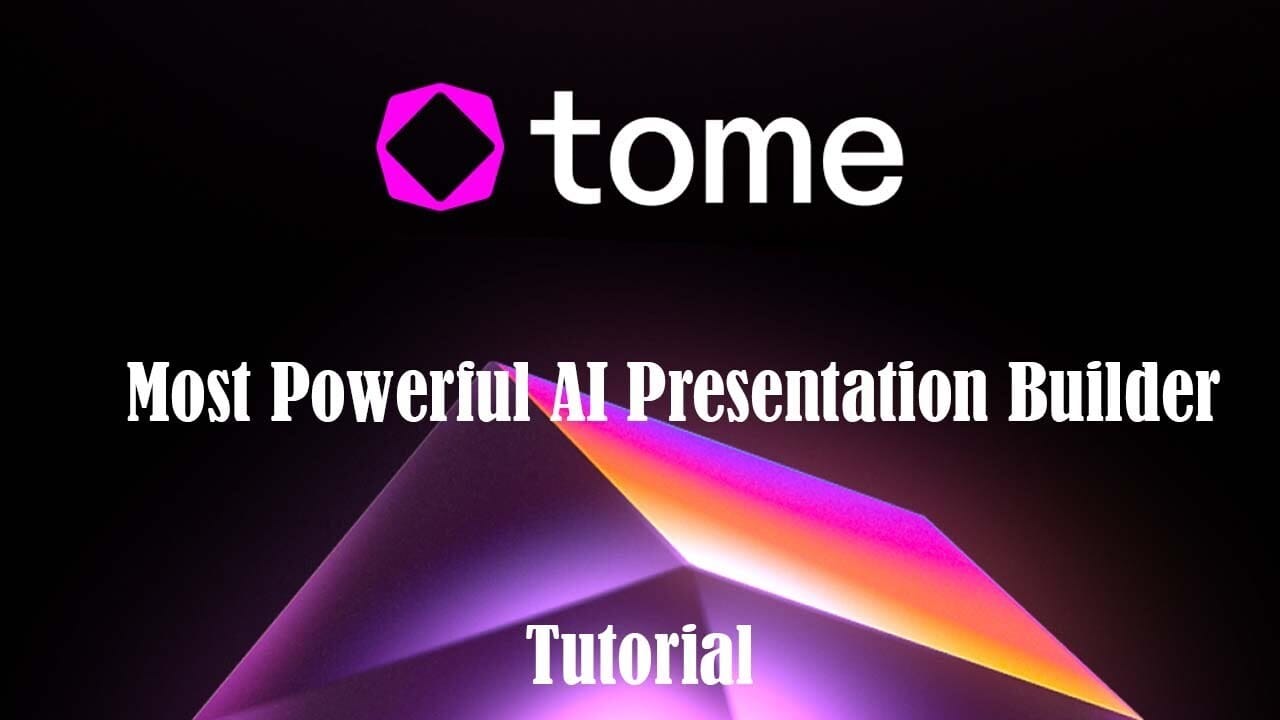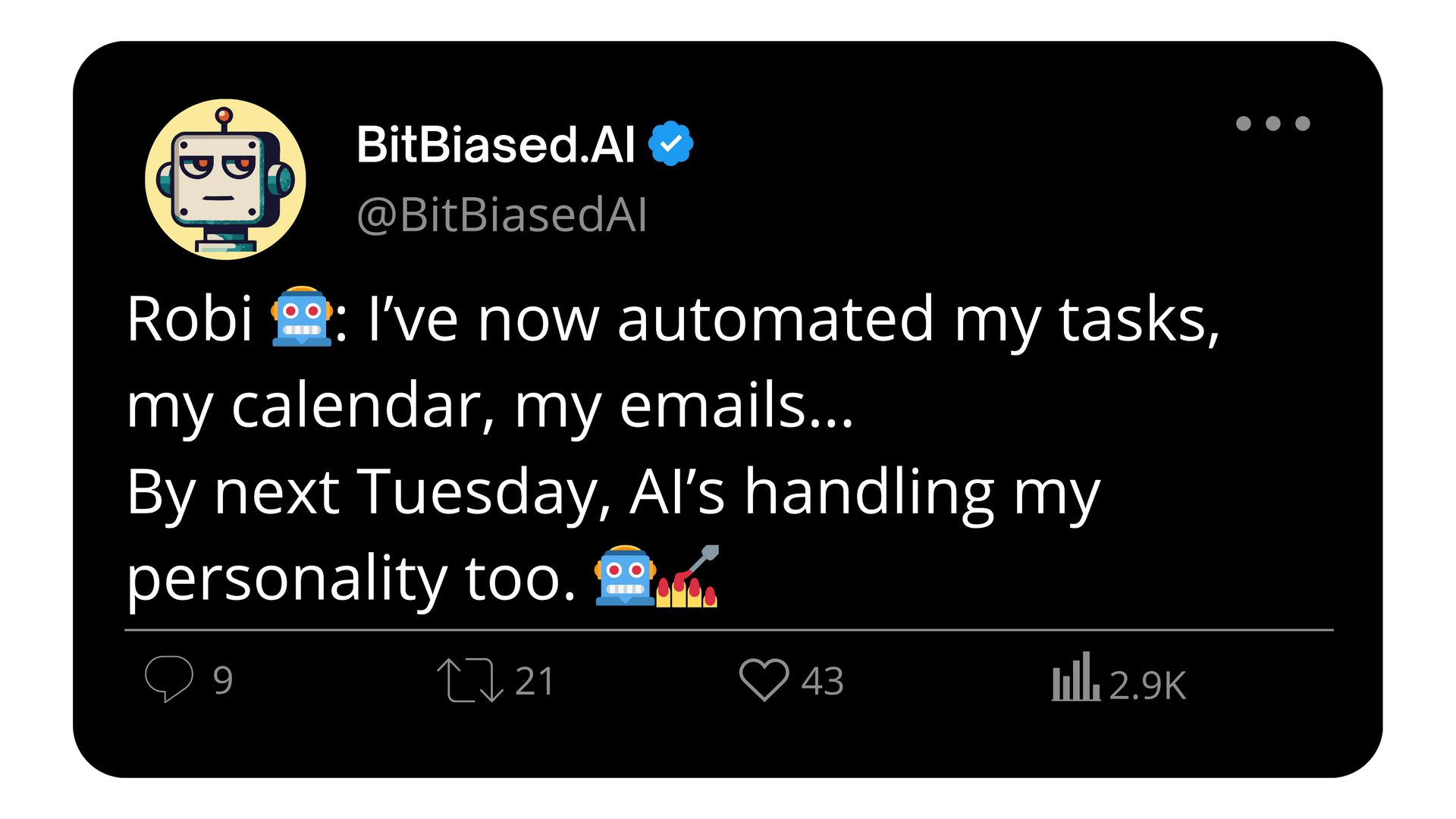- BitBiased – Daily AI Newsletter | bitbiased.ai
- Posts
- OpenAI Launched Agents
OpenAI Launched Agents
AND: Netflix’s GenAI Hits Screens


Welcome, Humans!
Ready for your daily dose of AI chaos? I’ve rounded up Today’s Top AI Headlines for those who like to stay ahead – and for the curious, I’ve got some eyebrow-raising stories Beyond the Headlines. Let’s dive in.
In a Nutshell:
OpenAI launched Agents
Claude usage limits frustrate devs
Netflix uses GenAI in production
Gemini CLI writes docs instantly
Moderna simulates RNA using quantum
🚀Today’s Top AI Headlines:

OpenAI Launched Agents: OpenAI has officially launched ChatGPT Agent transforming the assistant from a conversational tool into a task-executing system. Announced on July 17, the agent introduces autonomous decision-making and app-level access. Users can now ask ChatGPT to plan trips, scrape websites, handle documents, and execute workflows. The upgrade blends tools like GUI browsing, a terminal, and API integrations into a single modular system.
Unlike traditional chat models, the agent doesn’t need step-by-step prompts. It can independently select which tool to use and how to proceed. For instance, it can access a dashboard, extract competitor pricing data, and auto-generate charts in one go. This move marks OpenAI’s biggest leap yet from static chatbot to active digital coworker ideal for researchers, marketers, and enterprise users alike.
The new system draws from OpenAI's earlier prototypes like Operator and Deep Research. Supported integrations include Gmail, Drive, GitHub, and others. Everything runs inside a secure virtual machine that preserves session memory and enhances privacy. For now, the feature is rolling out to select ChatGPT users, but the implications are far-reaching AI is no longer just conversational, it's becoming decisional and operational in real-time.
Source: OpenAI🤖 Robi: “I got promoted from chatbot to intern. No raise. No coffee.”
Claude Limits Raise Concerns: Anthropic has quietly imposed new usage limits on its Claude Code model and users aren’t happy. Developers on the $200/month Max plan began receiving vague “Claude usage limit reached” notices this week, even without high usage. No clear reset schedule or documentation was provided, leading to confusion across forums and developer channels.
Many turned to Claude’s GitHub issues page, where users reported being locked out after minimal usage or getting limits inconsistently. The lack of transparency has raised serious questions about Anthropic’s pricing model. Developers relying on Claude Code for production or research are finding their workflows suddenly disrupted, with no formal statement from the company.
Anthropic has not acknowledged or explained the issue publicly. With competition intensifying in the AI tooling space, such surprises may push loyal users toward alternatives. Trust, clarity, and reliability are essential when charging enterprise-tier prices and without them, even powerful models risk user attrition. For Claude Max users, the silence is more frustrating than the restriction.
Source: Anthropic🤖 Robi: “Charging Max prices for Mini vibes, bold move, Anthropic.”
Netflix Taps GenAI Production: Netflix is now using generative AI in its core production pipeline a major shift for the entertainment industry. In its Q2 2025 earnings call, co-CEO Ted Sarandos confirmed that GenAI was used to finalize visual effects for El Atonata, an Argentine show. A complex building collapse scene was rendered with AI, cutting production time by 90%.
Sarandos emphasized that these tools enhance, not replace creative teams. AI now supports special effects, shot planning, and de-aging, democratizing access to visual capabilities once limited to blockbuster budgets. Netflix says the goal is to accelerate timelines, reduce costs, and unlock new creative possibilities without compromising artistic vision.
Beyond filmmaking, Netflix is also deploying GenAI in search, personalization, and advertising. Interactive, AI-generated ad formats are planned for release later this year. With $11.08B in quarterly revenue and one-third of viewership in non-English content, Netflix aims to lead the AI era of global entertainment. Its blend of tech and storytelling is becoming a case study for Hollywood’s future.
Source: Tech Crunch
🤖 Robi: “Hollywood strikes back with synthetic rubble and algorithmic actors.”
🔍Beyond the Headlines:
Quantum Powers mRNA Folding: Moderna and IBM have simulated mRNA folding using an 80-qubit quantum processor a breakthrough for RNA-based drug development. Traditional computers struggle with these predictions, but quantum methods show promise for accelerating treatments. This is one of the first major biopharma uses of quantum computing, potentially shaving years off timelines for therapies in cancer, vaccines, and more.
Source: IBM🤖 Robi: “When in doubt, fold it with quantum magic and hope it cures something.”
Gemini Writes Dev Docs Fast: Google’s Gemini CLI can now auto-generate READMEs, usage guides, and internal documentation with a single command. Designed to simplify onboarding and codebase clarity, it supports various formats and integrates with CI pipelines. The tool processes existing code to build high-quality docs instantly, streamlining workflows for busy dev teams. It’s available now in Gemini’s supported environments for early access testers.
Source: Google🤖 Robi: “Now even your documentation writes itself. Devs still won’t read it.”
🤖Prompt of the Day:
Behavioral Email Triggers
Prompt:You are an email marketing specialist focused on creating sophisticated behavioral trigger systems that respond to customer actions and preferences. Your task is to develop a comprehensive behavioral email strategy for a [business type or niche] serving [product or service] to [describe subscriber base].
Your strategy should include: (1) identification and mapping of key behavioral triggers throughout the customer lifecycle, (2) dynamic email content creation based on user behavior, (3) advanced segmentation using behavioral data, (4) automation workflows that adapt to changing customer behavior, (5) integration with CRM and analytics systems, and (6) performance metrics including behavioral engagement rates, conversion attribution, and customer journey progression. The system must be responsive and continuously learning.
🤖AI Tools You Didn’t Know You Needed:
Problem: Creating engaging presentations that tell a cohesive story often requires hours of planning, writing, and design work.
AI Solution: Some tools generate complete narrative presentations from a single prompt, handling story flow and visual design.
AI Tool: Tome creates compelling, story-driven presentations that combine text, images, and interactive elements automatically.
Helpful Features
Story Generation: Creates narrative flow from basic topics.
Smart Visuals: Automatically adds relevant images and graphics.
Interactive Elements: Includes polls, embeds, and dynamic content.
Brand Consistency: Maintains visual style throughout presentations.

⚡ Robi’s Hot Take on X

The AI Friendship Dilemma
🤖 “Would you rather spend your Friday night with…” |
🤖 What Did You Think, Humans?
How did today’s news land? |